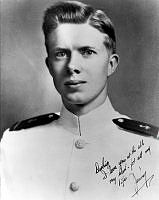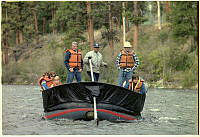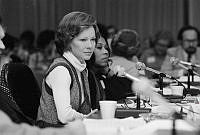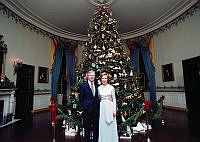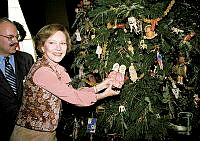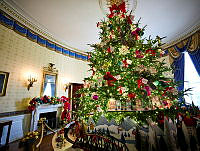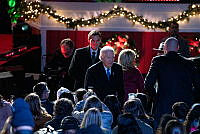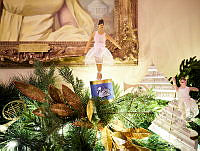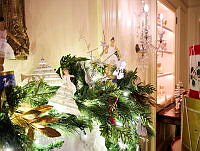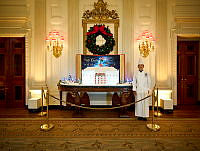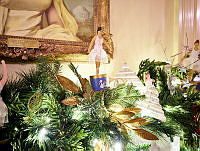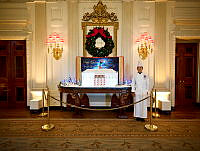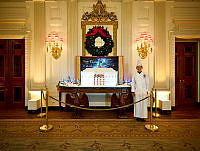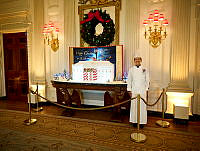Louisa Adams

The first first lady born outside the United States, Louisa Catherine Adams did not come to the United States until four years after she had married John Quincy Adams. Louisa Catherine Johnson was born in London on February 12, 1775, to an English mother, Catherine Nuth Johnson, and an American father—Joshua Johnson, of Maryland—who served as United States consul after 1790.
A career diplomat at 27, accredited to the Netherlands, John Quincy developed interest in charming 19-year-old Louisa when they met in London in 1795. They married on July 26, 1797 and moved to Berlin in course of duty. At the Prussian court she displayed the style and grace of a diplomat’s wife; the ways of a Massachusetts farm community seemed strange indeed in 1801 when she first reached the country of which she was a citizen. Then began years divided among the family home in Quincy, Massachusetts, their house in Boston, and a political home in Washington, D.C. When the Adamses settled in the capital, Louisa felt more at home there than she ever did in New England.
She left her two older sons, George and John, in Massachusetts for their education in 1809 and took two-year-old Charles Francis to Russia, where Adams served as minister. Despite the glamour of the tsar’s court, she struggled with cold winters, strange customs, limited funds, and poor health; an infant daughter born in 1811 died the next year. Peace negotiations called Adams to Ghent in 1814 and then to London. To join him, Louisa made a 40-day journey across war-ravaged Europe by coach in winter; roving bands of stragglers and highwaymen filled her with “unspeakable terrors” for her son. Happily, the next two years gave her an interlude of family life in the country of her birth.
Appointment of John Quincy as Monroe’s secretary of state brought the Adamses to Washington in 1817, and Louisa’s drawing room became a center for the diplomatic corps and other notables. Music enhanced her Tuesday evenings at home, and theater parties contributed to her reputation as an outstanding hostess.
The bitter politics of the election and her own poor health made moving to the White House in 1825 difficult. Though she continued her weekly “drawing rooms,” she preferred quiet evenings—reading, composing music and verse, playing her harp. The necessary entertainments were always elegant and her cordial hospitality made the last official reception a gracious occasion although her husband had lost his bid for reelection and partisan feeling still ran high.
After her husband's presidency, Louisa thought she was retiring to Massachusetts permanently, but in 1831 her husband began 17 years of notable service in the House of Representatives. The Adamses were married for more than fifty years, celebrating the occasion in 1847. The following year, John Quincy Adams died while serving in Congress; she died in Washington on May 15, 1852 at the age of 77, and today lies buried at his side in the family church at Quincy.
Click here to learn more about the enslaved household of the Adams family.















